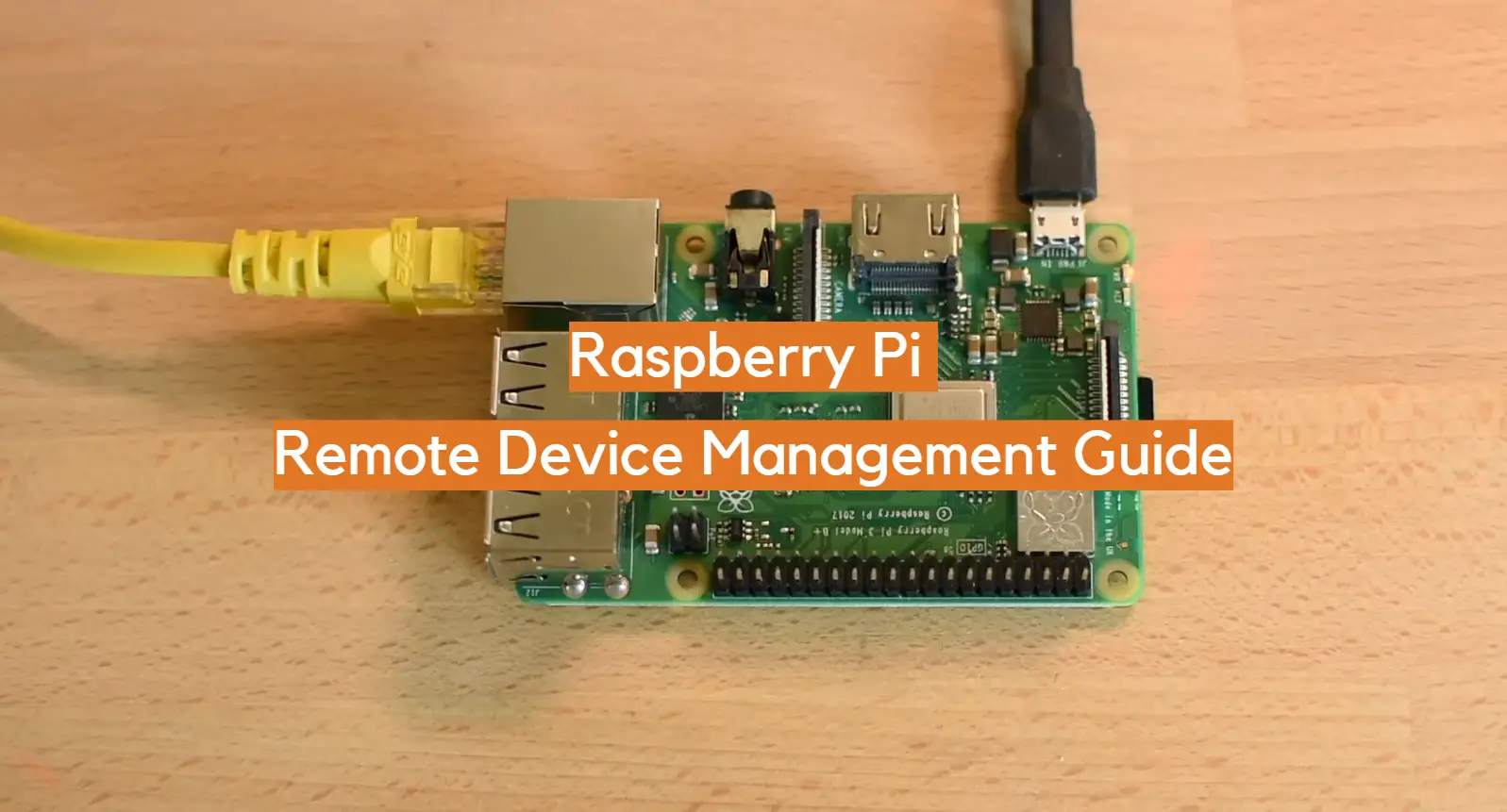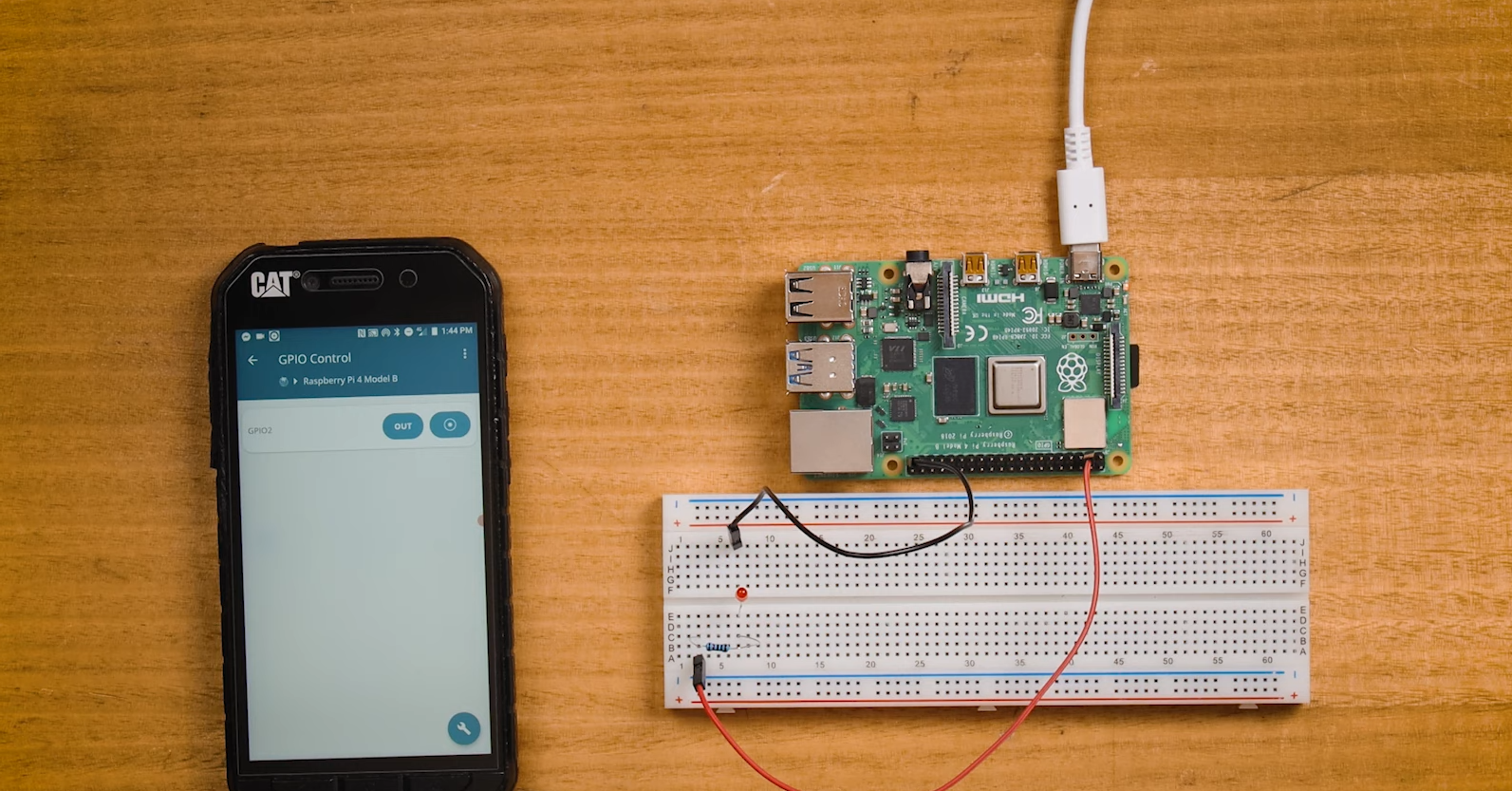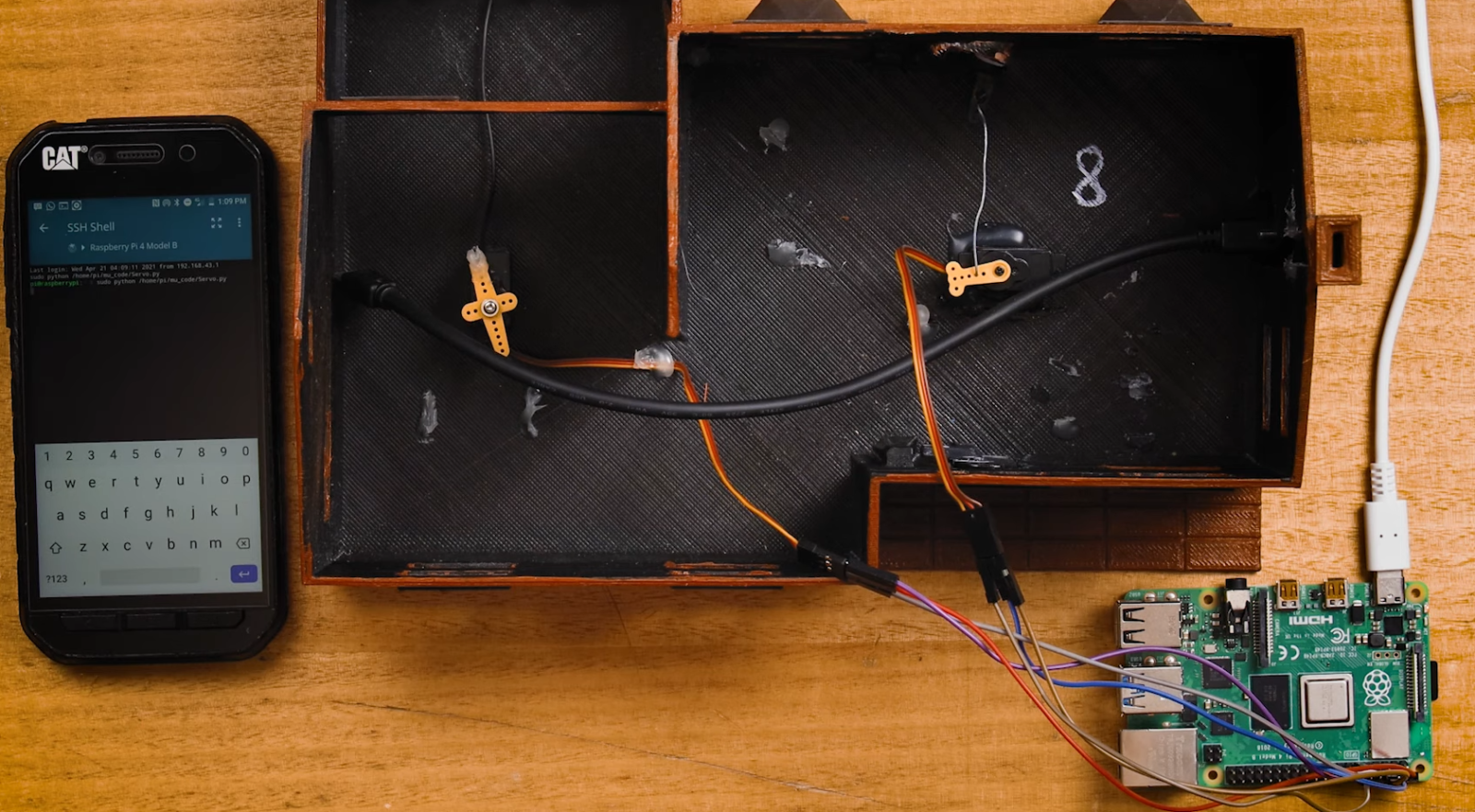Raspberry Pi remote device management has become increasingly essential for developers, hobbyists, and professionals alike. As technology continues to evolve, the demand for efficient tools to manage remote devices is growing exponentially. This guide aims to provide a detailed overview of how Raspberry Pi can be leveraged for remote device management, empowering users to streamline their operations and maximize productivity.
In today's interconnected world, managing devices remotely is no longer a luxury but a necessity. Whether you're overseeing IoT devices, servers, or home automation systems, Raspberry Pi offers a versatile solution that caters to diverse requirements. With its compact size, affordability, and robust capabilities, Raspberry Pi has revolutionized the way we approach remote device management.
This article will delve into the intricacies of Raspberry Pi remote device management, exploring its applications, tools, best practices, and challenges. By the end of this guide, you'll have a comprehensive understanding of how to harness the power of Raspberry Pi for managing devices remotely, ensuring seamless connectivity and efficient operations.
Read also:Amatuer Couple Swap
Table of Contents
- Introduction to Raspberry Pi
- Why Choose Raspberry Pi for Remote Management?
- Essential Tools for Remote Device Management
- Configuring Remote Access on Raspberry Pi
- Securing Your Remote Connections
- Best Practices for Remote Device Management
- Applications of Raspberry Pi in Remote Management
- Troubleshooting Common Issues
- Case Studies and Real-World Examples
- Future Trends in Remote Device Management
Introduction to Raspberry Pi
Raspberry Pi is a series of small single-board computers developed by the Raspberry Pi Foundation. Initially designed as an educational tool, it has since evolved into a versatile platform for various applications, including remote device management. The compact size, low power consumption, and affordability make Raspberry Pi an ideal choice for managing devices remotely.
The Raspberry Pi operates on a Linux-based operating system, providing users with a flexible environment to run a wide range of software and services. Its expandability through GPIO pins and compatibility with external peripherals further enhance its capabilities, making it suitable for diverse remote management tasks.
With its growing community and extensive documentation, Raspberry Pi offers a supportive ecosystem for users to explore and implement remote device management solutions effectively.
Why Choose Raspberry Pi for Remote Management?
Raspberry Pi stands out as a top choice for remote device management due to its unique features and advantages. Here are some compelling reasons why Raspberry Pi is an excellent option:
- Cost-Effective: Raspberry Pi is affordable, making it accessible for both individual users and organizations.
- Compact and Portable: Its small form factor allows for easy deployment in various environments.
- Energy Efficient: Raspberry Pi consumes minimal power, ensuring long-term sustainability.
- Versatile Applications: From IoT devices to home automation, Raspberry Pi can handle a wide range of remote management tasks.
- Community Support: A vibrant community provides continuous updates, tutorials, and resources for users.
Essential Tools for Remote Device Management
SSH for Remote Access
Secure Shell (SSH) is a fundamental tool for remote device management using Raspberry Pi. It enables users to securely access and control devices from remote locations. SSH provides encrypted communication, ensuring data privacy and integrity.
To set up SSH on Raspberry Pi:
Read also:Belton Stage Park
- Enable SSH in the Raspberry Pi configuration settings.
- Install an SSH client on your local machine (e.g., PuTTY for Windows or Terminal for macOS/Linux).
- Connect to the Raspberry Pi using its IP address and login credentials.
VNC for Graphical Interfaces
Virtual Network Computing (VNC) is another crucial tool for managing Raspberry Pi devices remotely. VNC allows users to access the graphical user interface (GUI) of the Raspberry Pi from a remote location, facilitating more intuitive control and monitoring.
To configure VNC on Raspberry Pi:
- Install the VNC server on the Raspberry Pi using the package manager.
- Launch the VNC viewer on your local machine and connect to the Raspberry Pi's IP address.
- Log in using the Raspberry Pi's credentials to access the GUI.
Configuring Remote Access on Raspberry Pi
Configuring remote access on Raspberry Pi involves several steps to ensure seamless connectivity. Here's a step-by-step guide:
- Set Up Networking: Configure the Raspberry Pi's network settings to obtain a static IP address or ensure consistent connectivity through DHCP.
- Enable Remote Access Tools: Install and enable SSH and VNC as per your requirements.
- Test Connectivity: Use tools like ping or traceroute to verify network connectivity between the local machine and Raspberry Pi.
- Secure the Connection: Implement security measures such as firewalls, password policies, and encryption to safeguard remote access.
Securing Your Remote Connections
Security is paramount when managing devices remotely. Here are some best practices to secure your Raspberry Pi remote connections:
- Use Strong Passwords: Implement complex passwords and consider enabling two-factor authentication for added security.
- Regularly Update Software: Keep the operating system and installed software up to date to patch vulnerabilities.
- Configure Firewalls: Use firewalls to restrict unauthorized access and monitor network traffic.
- Encrypt Communications: Utilize SSH and VNC with encryption enabled to protect data during transmission.
Best Practices for Remote Device Management
Adhering to best practices ensures efficient and secure remote device management using Raspberry Pi. Consider the following guidelines:
- Plan Your Network Architecture: Design a robust network infrastructure to support remote device management effectively.
- Document Configuration Details: Maintain detailed records of network settings, IP addresses, and login credentials for easy reference.
- Monitor Device Performance: Regularly check the performance and status of managed devices to identify and resolve issues promptly.
- Backup Critical Data: Implement a reliable backup strategy to safeguard important data and configurations.
Applications of Raspberry Pi in Remote Management
Raspberry Pi finds applications in various remote management scenarios, including:
- IoT Device Management: Monitor and control IoT devices such as sensors, actuators, and smart appliances.
- Home Automation: Manage lighting, climate control, and security systems remotely.
- Server Management: Use Raspberry Pi as a lightweight server for hosting websites, databases, or applications.
- Industrial Automation: Deploy Raspberry Pi in industrial settings for process control and data acquisition.
Troubleshooting Common Issues
Encountering issues during remote device management is inevitable. Here are some common problems and their solutions:
- Connection Refused: Verify the IP address, port number, and firewall settings.
- Authentication Failure: Ensure the correct username and password are entered and check for account lockouts.
- Slow Performance: Optimize network settings, reduce bandwidth usage, and update software.
- Device Unreachable: Check network connectivity, power supply, and hardware status.
Case Studies and Real-World Examples
Real-world examples demonstrate the effectiveness of Raspberry Pi in remote device management. For instance, a manufacturing company utilized Raspberry Pi to monitor production line sensors, enabling real-time data analysis and predictive maintenance. Similarly, a homeowner implemented Raspberry Pi for home automation, controlling lighting and security systems remotely through a smartphone app.
Future Trends in Remote Device Management
The future of remote device management with Raspberry Pi looks promising, with emerging trends such as:
- Artificial Intelligence Integration: Leveraging AI for predictive analytics and autonomous decision-making.
- 5G Connectivity: Enhancing remote management capabilities with faster and more reliable network connections.
- Edge Computing: Processing data closer to the source for reduced latency and improved efficiency.
- Cloud Integration: Combining Raspberry Pi with cloud services for scalable and flexible solutions.
Conclusion
In conclusion, Raspberry Pi remote device management offers a powerful and versatile solution for managing devices remotely. By understanding its features, tools, and best practices, users can harness its potential to streamline operations and enhance productivity. We encourage you to explore the possibilities of Raspberry Pi in remote device management and share your experiences in the comments below. Don't forget to check out our other articles for more insights and tips on leveraging technology effectively.
For further reading, refer to authoritative sources such as the Raspberry Pi Foundation and Debian Documentation for comprehensive guides and updates.


